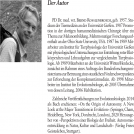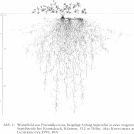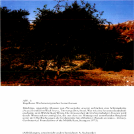biology
Historische und theoretische Grundlagen des Gestaltbegriffs in der Biologie
Form or Gestalt is a specific characteristic of every living organism. It is closely linked to function and contains information per se. Gestalt can be understood as both a cause and an effect of numerous processes of the organism. It therefore represents a value in its own right and should not be regarded merely as the passive result of… read more

Geschichte und Gegenwart des organismischen Denkens in der Biologie
Summary
Throughout the history of biology, there have always been two opposing basic views of life. The one view tried to attribute the processes of life to mechanistic, physical-chemical principles. Rejecting this view, the other one tried to find forces or… read more

Denkweisen in der Biologie
Philosophy of science has shown that research programs in the sense of paradigms are not only shaped by facts, but also by certain ways of thinking and forms of explanation, even by world views. Throughout the history of science repeatedly alternative research programs existed simultaneously for some time and competed with one another until… read more

Betrachtung zur Gestaltbiologie der Bienen
Today there are descriptions of more than 20,000 species of bees worldwide. Among them is the honeybee, by far the best known of all. Whilst there has been much research and many publications on the biology of the honeybee, very little is known to date about the other wild bees. When we try to gain an overview of the variety of forms of all… read more
Aspekte der Gestaltentstehung von Tier und Pflanze und Sichtweisen Goethes

Mikrobiom und erweiterter Organismusbegriff
Since the modern process of genome sequencing has made available an extensive amount of research findings, our knowledge of microbial life in the human organism and wider nature has greatly advanced. At the same time it has raised new issues and perspectives which point to a paradigm Shift, particularly in medical thinking. Here it is above all… read more

Die Blutwurz, Potentilla erecta (L.) Räuschel.
Tormentil, Potentilla erecta (L.) Räuschel. Its capacity for connecting its polarities with one another
Tormentil, Potentilla erecta, belongs to the Rosaceae, but in all its organs it is morphologically different from its relatives. The 'cosmic soul' element of the plant deeply affects tormentil early in its development, thereby… read more

Anthroposophische Aufschlüsse der molekularen Biologie
An anthroposophical elucidation of molecular biology — the common time structure of consciousness and genetics
A qualitative study of the types of molecules involved in protein synthesis (DNA, RNA and protein), guided by the anthroposophical view of man as a three membered being, led to correlating DNA with head/thinking, proteins with… read more

Gestaltmotive in der Gattung Ranunculus
Formative motifs in the genus Ranunculus
According to ‘Flora Europaea’ (2nd ed. 1993) almost every available habitat is colonised by the 135 species of the genus (not family!) Ranunculus. In parallel with this, manifests an enormous plasticity in the formation of the vegetative parts, the leaves, which have an almost inexhaustible… read more

Die Mistel und das Geheimnis ihrer Heilkraft
Mistletoe and the secret of its healing power
A practical method for finding the specific in a phenornenon is to look for antagonistic or polar manifestations of it. There are some immediately strik« ing antagonisms in the case of the two closely related families Viscaceae and Loranthaceae : 1. Loranthaceae tend to have lush and largcly… read more

